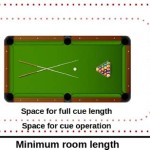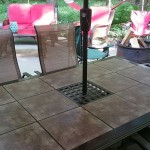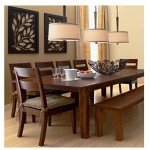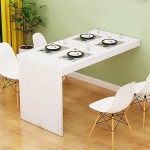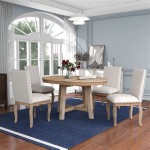Picnic Tables With Detached Benches: Exploring Design, Benefits, and Applications
Picnic tables with detached benches represent a versatile and adaptable outdoor seating solution. Unlike traditional picnic tables with attached benches, this design offers enhanced flexibility in arrangement and usage, catering to a diverse range of needs and preferences. This article will delve into the various aspects of picnic tables featuring detached benches, examining their construction materials, ergonomic considerations, advantages over attached bench models, and ideal applications in both residential and commercial settings. The goal is to provide a comprehensive understanding of why these tables are a popular choice for outdoor recreation and relaxation.
The fundamental distinction between picnic tables with detached benches and their attached counterparts lies in the separation of the seating surface from the table itself. This seemingly simple difference has profound implications for accessibility, comfort, and overall usability. Whereas attached benches are fixed in place, detached benches can be positioned at varying distances from the table, accommodating individuals of different sizes and mobility levels. This adaptability makes them particularly suitable for environments that need to accommodate a broad spectrum of users.
The materials used in the construction of picnic tables with detached benches greatly influence their durability, aesthetic appeal, and suitability for specific environments. Common materials include wood, metal, and recycled plastic. Each material possesses unique characteristics that contribute to the overall performance and longevity of the table.
Wooden picnic tables, often crafted from pressure-treated lumber such as pine or cedar, offer a classic and natural aesthetic. The warmth and texture of wood blend seamlessly with outdoor surroundings, creating an inviting and comfortable atmosphere. Pressure treatment protects the wood from rot, decay, and insect infestation, extending its lifespan. However, wooden tables require periodic maintenance, including cleaning, staining, and sealing, to preserve their appearance and structural integrity. The frequency of maintenance depends on the climate and exposure to the elements. Hardwood options, such as teak or mahogany, offer superior durability and resistance to weathering but come at a higher cost.
Metal picnic tables, typically constructed from steel or aluminum, provide exceptional strength and durability. Steel tables are often powder-coated to prevent rust and corrosion, ensuring long-term resistance to the elements. Aluminum tables are naturally rust-resistant, making them an excellent choice for coastal environments. Metal tables are generally low-maintenance, requiring only occasional cleaning. Their sleek and modern appearance complements contemporary outdoor spaces. However, metal can become hot to the touch in direct sunlight, which can affect user comfort. Design considerations, such as perforated surfaces or shade structures, can mitigate this issue.
Recycled plastic picnic tables represent an environmentally conscious choice. These tables are made from recycled plastic bottles and other post-consumer plastic waste, diverting materials from landfills and reducing the demand for virgin plastics. Recycled plastic is highly resistant to moisture, rot, and insects, making it an ideal material for outdoor furniture. It requires minimal maintenance and can withstand harsh weather conditions. Recycled plastic picnic tables are available in a wide range of colors and styles, offering versatility in design. While they may not possess the natural aesthetic of wood, they offer a sustainable and durable alternative.
Ergonomic considerations are paramount in the design of picnic tables with detached benches. The height of the table and benches, the depth of the seating surface, and the angle of the backrest (if present) all contribute to user comfort. A well-designed picnic table promotes good posture and reduces strain on the back and legs.
The ideal table height typically ranges from 28 to 30 inches, providing ample legroom for most adults. The bench height should be approximately 17 to 18 inches, allowing users to sit comfortably with their feet flat on the ground. The depth of the seating surface should be sufficient to provide adequate support without being excessively deep. Backrests, when included, should be angled slightly backward to promote a relaxed posture. The distance between the table and the benches should be adjustable to accommodate individuals of different sizes and preferences.
Detached benches offer a distinct advantage in terms of accessibility. Users can easily move the benches to create more space for wheelchairs or mobility devices. This flexibility is particularly important in public parks, schools, and other environments where accessibility is a priority. Attached benches, on the other hand, can present significant barriers to individuals with mobility limitations. The fixed position of the benches may make it difficult or impossible for them to access the table comfortably.
Key Point 1: Enhanced Accessibility and Flexibility
Picnic tables with detached benches offer superior accessibility compared to traditional attached bench designs. The ability to move the benches independently allows for greater flexibility in accommodating individuals with mobility limitations, such as those using wheelchairs or walkers. The adjustable distance between the table and benches ensures that users can comfortably position themselves at the table, regardless of their physical needs. This adaptability makes detached bench picnic tables an inclusive seating solution for diverse user groups. Furthermore, the benches can be moved to create more space for activities or to facilitate easier cleaning and maintenance of the surrounding area.
Key Point 2: Customization and Design Versatility
The detached nature of the benches allows for greater customization and design versatility. Different types of benches can be paired with the table, allowing for a tailored aesthetic. For example, backless benches can be used for a minimalist look, while benches with backrests offer added comfort and support. The benches can also be placed around the table in various configurations, such as on all four sides or only on two sides, depending on the available space and desired seating arrangement. This flexibility allows designers to create unique and functional outdoor spaces that meet specific needs and preferences.
Moreover, the separate benches can be used independently as needed, providing additional seating options for gatherings and events. This adaptability makes detached bench picnic tables a valuable asset for both residential and commercial properties. The ability to mix and match different bench styles and materials further enhances the design possibilities.
Key Point 3: Ease of Maintenance and Storage
Detached benches contribute to ease of maintenance and storage. Because the benches are not permanently attached to the table, cleaning around and under the table is much simpler. Spills and debris can be easily removed without obstacles. The benches can be moved for thorough cleaning or power washing of the entire seating and table area. This accessibility helps maintain a clean and sanitary environment, particularly in public spaces. Furthermore, during off-season or periods of infrequent use, the benches can be stored separately from the table. This reduces the overall footprint of the setup and protects the benches from weather damage, extending their lifespan. The ability to stack or nest the benches facilitates efficient storage, saving space and simplifying logistics.
The applications of picnic tables with detached benches are diverse and encompass both residential and commercial settings. In residential environments, these tables provide a comfortable and inviting space for outdoor dining, entertaining, and relaxing. They are ideal for patios, decks, and backyards, creating a focal point for family gatherings and social events. The flexibility of the detached benches allows homeowners to customize the seating arrangement to suit their specific needs and preferences.
In commercial settings, picnic tables with detached benches are commonly found in parks, schools, campgrounds, and outdoor dining areas. Their accessibility and versatility make them well-suited for public spaces where diverse user groups are expected. Parks and recreational areas benefit from the adaptability of these tables, providing comfortable seating for visitors of all ages and abilities. Schools and universities use them to create outdoor learning and dining spaces, fostering a sense of community and promoting interaction among students. Campgrounds offer picnic tables as a standard amenity, providing campers with a convenient and comfortable place to prepare and enjoy meals. Outdoor dining areas, such as cafes and restaurants with patios, can use picnic tables with detached benches to create a casual and inviting atmosphere for customers.
The selection of a picnic table with detached benches should be based on a careful consideration of various factors, including the intended use, the environment, and the budget. The size of the table should be appropriate for the number of users it will accommodate. The materials should be durable and weather-resistant, capable of withstanding the local climate. The design should be aesthetically pleasing and complement the surrounding environment. Accessibility should be a primary consideration, ensuring that the table is usable by individuals of all abilities. The price should be within the budget, taking into account the long-term cost of maintenance and replacement.
Installation requirements vary depending on the type of picnic table and the location. Some tables may require anchoring to the ground to prevent tipping or theft, particularly in public spaces. Others may simply be placed on a level surface without any special installation. It is important to follow the manufacturer's instructions carefully to ensure proper installation and safety. Regular inspection and maintenance are essential to keep the picnic table in good condition and extend its lifespan. This includes cleaning, tightening loose bolts, and repairing any damage promptly.
In conclusion, picnic tables with detached benches offer a range of advantages over traditional attached bench designs. Their enhanced accessibility, customization options, and ease of maintenance make them a versatile and practical choice for both residential and commercial applications. By carefully considering the materials, design, and installation requirements, one can select a picnic table that meets specific needs and provides years of outdoor enjoyment.

Wood Picnic Table With Detached Benches

Cedar Wood Cross Legged Picnic Table W Benches

Round Wooden Picnic Table With Detached Benches

Douglas Fir 6 Villa Picnic Table With Detached Benches

Picnic Table Plan

Round Wooden Picnic Table With Detached Benches

How To Build A Detached Bench Picnic Table Free Plans Easy Beginner Project

43 Square Table 4 Detached Backed Benches Unfinished Stain Options Ebay

Pine Wood Outdoor Picnic Table Set From Dutchcrafters Amish Furniture

Sleek Picnic Table With Detached Benches 6 Steps Pictures Instructables


